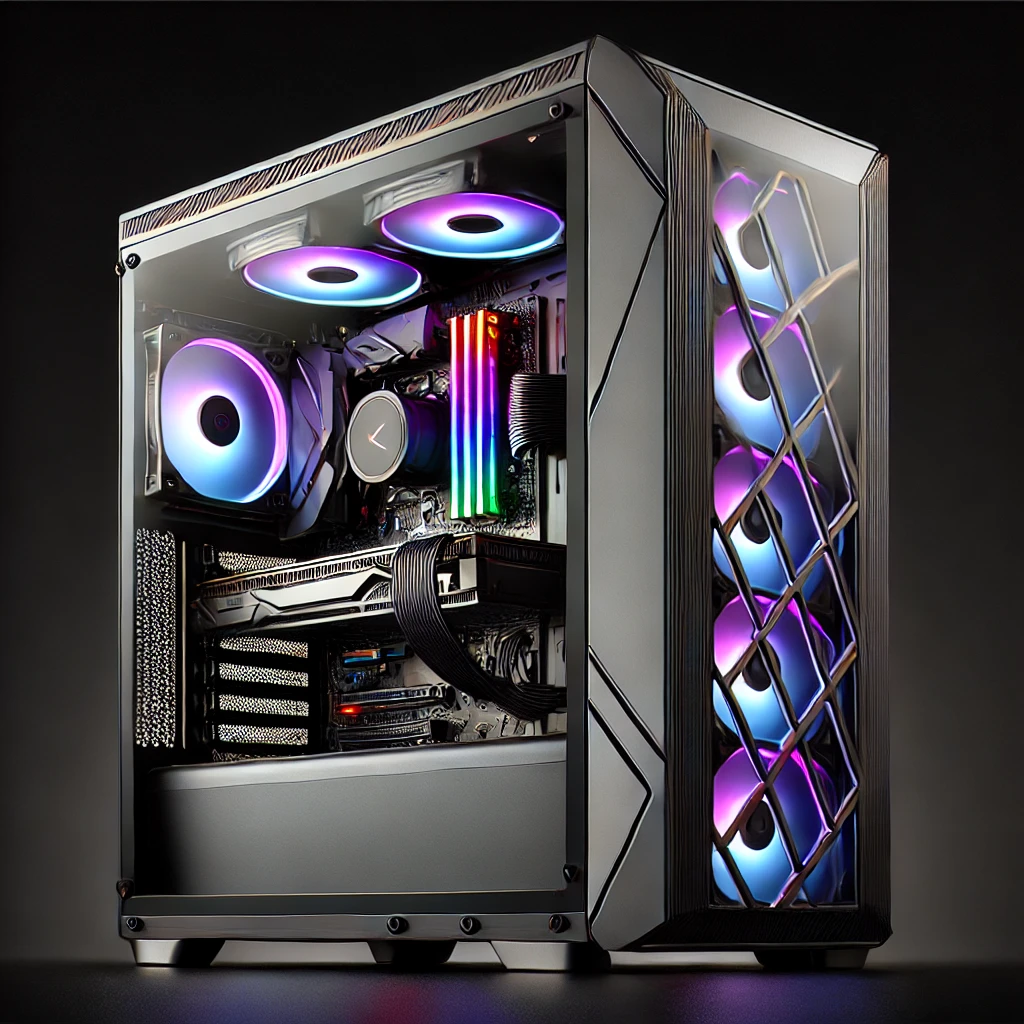Your cart is currently empty!
If you’re diving into the world of gaming computers, you’ve probably heard a lot about RAM (Random Access Memory). It’s a crucial component that can make or break your gaming experience. But with various types of RAM available, how do you know which one is the best for your gaming rig? Let’s break it down!
DDR3 vs. DDR4 vs. DDR5: What’s the Difference?
DDR3 RAM
DDR3 (Double Data Rate 3) was the standard for quite a few years. It’s reliable and still found in older gaming systems. However, compared to newer types, it’s slower and less efficient. If you’re on a tight budget and building a system with older components, DDR3 might still be worth considering. But for most gamers looking to build a new rig, it’s best to look at newer options.
DDR4 RAM
DDR4 has been the go-to for gaming PCs for a while now. It offers faster speeds and better efficiency compared to DDR3. Most modern motherboards support DDR4, and it’s a great choice for gamers who want a solid performance boost without breaking the bank.
- Speed: DDR4 typically ranges from 2133 MHz to 4266 MHz.
- Capacity: Modules are available in capacities from 4GB to 32GB and beyond.
- Compatibility: Widely compatible with most modern CPUs and motherboards.
DDR5 RAM
The latest in RAM technology, DDR5, is a game-changer. It provides significant improvements in speed, bandwidth, and efficiency over DDR4. While it’s currently more expensive and requires a compatible motherboard, DDR5 is the way to go for future-proofing your gaming setup.
- Speed: DDR5 starts at around 4800 MHz, with much higher speeds expected.
- Capacity: Modules can handle more data, with typical sizes starting from 8GB and going much higher.
- Compatibility: Limited to the newest motherboards and CPUs, but this will change over time.
Comparison Chart: DDR3 vs. DDR4 vs. DDR5 RAM
| Feature | DDR3 RAM | DDR4 RAM | DDR5 RAM |
|---|---|---|---|
| Introduction Year | 2007 | 2014 | 2020 |
| Speed Range | 800 – 2133 MHz | 2133 – 4266 MHz | 4800 – 8400+ MHz |
| Data Rate | Up to 17 GB/s | Up to 25.6 GB/s | Up to 51.2 GB/s |
| Voltage | 1.5V | 1.2V | 1.1V |
| Capacity per Module | Up to 16GB | Up to 32GB | Up to 128GB |
| Latency (CL) | 9 – 15 | 15 – 19 | 32 – 40 |
| Prefetch Buffer | 8-bit | 8-bit | 16-bit |
| Power Efficiency | Moderate | Improved over DDR3 | Significantly improved over DDR4 |
| Compatibility | Older systems | Most modern systems | Latest systems |
| Cost | Generally cheaper | Moderate | More expensive |
How Much RAM Do You Need?
For gaming, 16GB of RAM is generally considered the sweet spot. It’s enough to handle most games smoothly and allows for multitasking, like streaming or running background applications. For those who want to future-proof their system or run more demanding applications, 32GB is a solid choice. Anything beyond 32GB is usually overkill for gaming but can be beneficial for other intensive tasks like video editing or 3D rendering.
Speed Matters, But So Does Latency
When choosing RAM, don’t just look at the speed (measured in MHz). Latency, often shown as CL (CAS Latency), is equally important. Lower latency means faster data access times. For gaming, a balance of high speed and low latency is ideal.
Location Matters: Lithgow’s Best for Tech Support
At Lithgow Tech Services, located at 53 Main Street, Lithgow, NSW, we understand the intricacies of gaming PCs. Whether you’re in Lithgow, Bathurst, Katoomba, Leura, Blackheath, Mount Victoria, Bell, Mellow Bath, Wentworth Falls, or Portland, our experts can help you choose the right RAM for your gaming needs.
For those leaning towards Macs or iPhones, check out our partner’s site at Macmason.tech. And if you need to purchase any components, visit our online store.
Discover more from LithGeek Custom Gaming Computers
Subscribe to get the latest posts sent to your email.
Posted
in
by
Tags:

